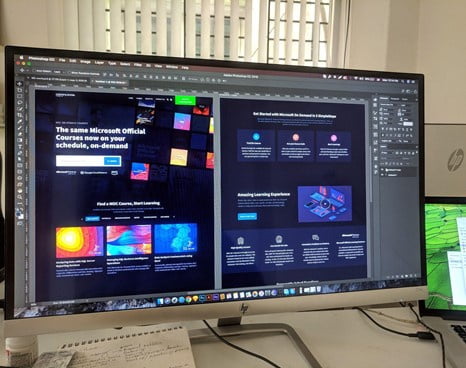Automating your business processes can save you time and money, but it can be hard to get started. However, there is plenty of different automation out there, and one of these is Azure Automation.

What is Azure Automation?
Azure Automation is a cloud-based automation service that helps you manage your infrastructure and configure your systems. It also automates tasks, including operating system updates and event-based diagnostics and resolutions. Additionally, it supports automation across both Azure and non-Azure environments.
Features of Azure Automation
Process Automation: Runbooks are PowerShell or Graphical Runbook workflows that execute actions automatically. They can be used to automate tasks such as backing up data, deploying software, or stopping and starting virtual machines. Runbooks can be run manually or triggered by an event.
Configuration Management: Configuration Management ensures that your systems are configured consistently and compliant with corporate policies. It includes features like Desired State Configuration (DSC) and change tracking.
Update Management: Update Management automates installing the required operating system and application updates on your machines. It can be used to patch both Azure and non-Azure machines.
Shared Capabilities: Shared Capabilities are features common to all Azure Automation account types. These features include authentication, certificate management, connection management, and Run As accounts.
Heterogeneous Support: Heterogeneous Support allows you to manage Azure and non-Azure resources from a single Azure Automation account. Currently supported non-Azure resources include Amazon Web Services (AWS), Google Cloud Platform (GCP), and VMware vSphere.
Advantages of Automating Azure
Azure Automation provides a way for you to automate the tasks involved in deploying and maintaining your Azure solutions. By automating these tasks, you can save time and money and improve the reliability of your Azure deployments. Automating Azure tasks can also help you meet compliance requirements by ensuring that all changes to your Azure resources are tracked and audited.
There are many advantages to automating your Azure AD tasks, including:
Improved reliability: By automating mundane and error-prone tasks, you can reduce the chances of human error and improve the reliability of your Azure deployments.
Cost savings: Automating Azure tasks can help you save money on your Azure bill. For example, azure functions are often more cost-effective than traditional VMs regarding compute costs.
Increased efficiency: Automating tasks can free up your time to focus on more important work.
Greater compliance: Automation can help you meet compliance requirements by ensuring that all changes to your Azure resources are tracked and audited.
Automating Azure tasks is a great way to improve your Azure deployments’ reliability, efficiency, and compliance.
Azure’s Backup Services
Azure Backup is a cloud-based backup service that helps protect your data and provides a reliable recovery solution for data loss. It can back up data from on-premises servers, virtual machines (VMs), and workstations, as well as Azure VMs.
Azure Backup offers multiple storage options for your backup data, including locally redundant storage (LRS), geo-redundant storage (GRS), and read-access geo-redundant storage (RA-GRS). Azure Backup also allows scheduling backups and retaining backup data for long-term retention.
What is an Active Directory, and Can You Use It To Manage Azure Resources?
Active Directory is a Microsoft 365 configuration management tool that helps organizations manage their users, devices, and resources. For example, you can use it to automate the process of creating and managing user accounts in Azure by using an Office 365 configuration tool like the ones from Simeon Cloud. Additionally, Active Directory can be used to manage and control access to Azure resources.
You can use Azure Active Directory to:
- Manage user identities and their permissions in your Azure resources
- Synchronize your on-premises Active Directory with Azure Active Directory
- Enable single sign-on (SSO) for Azure resources from any location
- Manage mobile device access to Azure resources
- Protect your Azure resources from malicious or unauthorized access
How To Set Up Your Office 365 Using Azure Automation?
Many different tasks can be automated using Azure, just like how you automate Office 365 setup. Here are the steps:
- First, You need to create an Azure Automation account.
- Once you have created your Automation account, you must create a runbook. A runbook is a PowerShell script that contains the steps necessary to automate a task. We will use a runbook to automate the Office 365 tenant setup in this case.
- Once you have created your runbook, you will need to publish it.
- After publishing your runbook, you will need to create a schedule. A schedule is how often your runbook will be run. You can create a daily, weekly, or monthly schedule to run your runbook.
- After creating your schedule, you will need to add a connection. A connection is necessary for your runbook to connect to Office 365.
- The last step is to test your runbook. After you have tested your runbook, you can set Office 365 tenant setup automatically using Azure Automation.
Azure Automation can help you manage your resources and save time. However, it’s essential to understand the basics so that you can get started using it to its fullest potential.
Author’s Name – Jeff Nevins, CTO of Simeon Cloud, a provider of a multi-tenant Microsoft 365 configuration management platform for MSPs. Nevins gives his take on cloud management and the MSP tool sets that are currently available.
Site info: Simeon Cloud is the leading cloud configuration solution for implementing governance and automation for Modern Digital Workplaces using Microsoft 365. With its friendly user interface, Simeon Cloud enables teams to easily manage configuration as code, establish baseline configurations for multiple tenants, deploy non-production environments, monitor and document drift, and back up and recover configurations.



